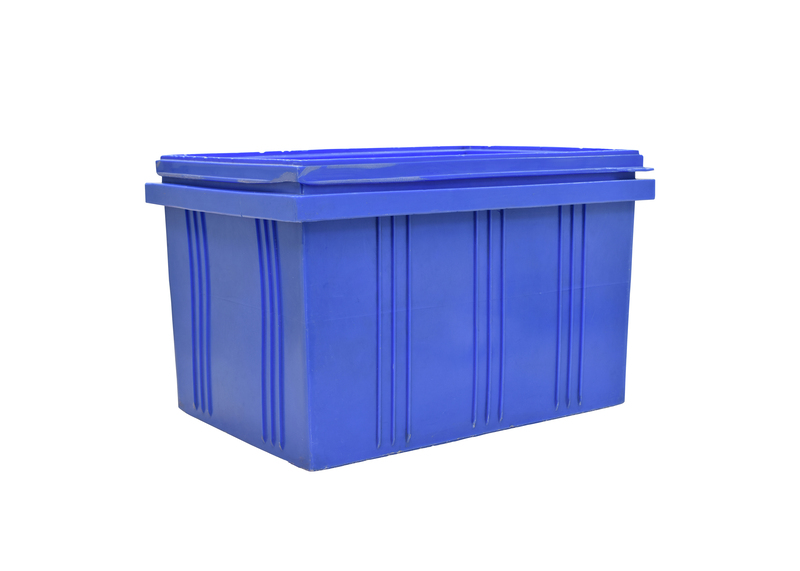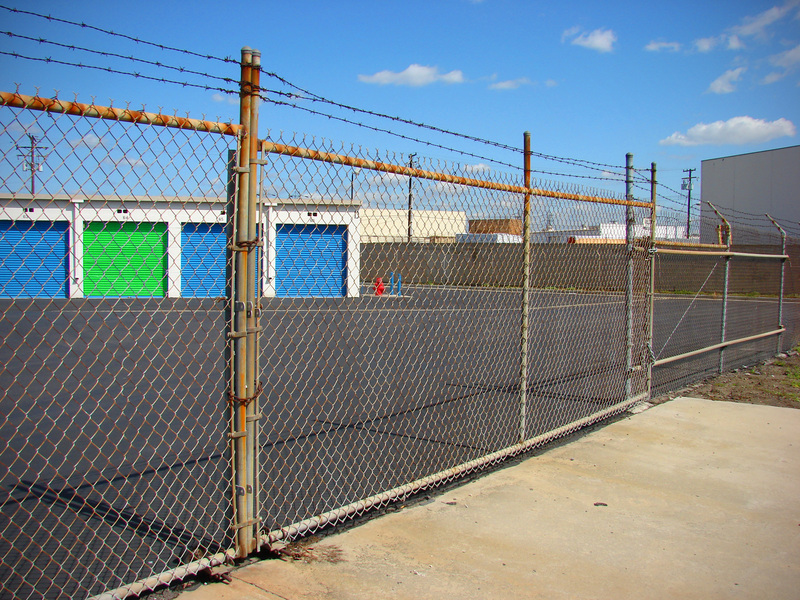Guide to Storing a Freezer with Care
Posted on 29/05/2025
Guide to Storing a Freezer with Care
Properly storing a freezer ensures its longevity, efficiency, and ability to keep your food at its safest and freshest. Whether you're planning to store your freezer while moving, during renovations, or for long-term periods, understanding the right steps is crucial. This comprehensive guide to storing a freezer with care covers all aspects, from preparation to maintenance, storage locations, and essential storage tips for both upright and chest freezers. By following these recommendations, you will protect your appliance investment and be ready to enjoy flawless freezing performance when your freezer goes back into use.
Why Storing a Freezer Properly Matters
Many households and businesses occasionally need to store a freezer temporarily or over a long period. Careful storage avoids costly damages such as mold, odors, rust, or component failure. Storing a freezer improperly can lead to electrical issues, broken seals, infestations, or the deterioration of key cooling mechanisms. By taking the right steps, you preserve both the unit and any food you may keep inside in the future.

Main Considerations Before Storing a Freezer
- Location: The right storage spot greatly influences freezer preservation and future usability.
- Preparation: Correct cleaning and maintenance ensure the freezer stays fresh and functional.
- Position: Freezer orientation and ventilation directly impact its integrity during storage.
- Protection: Proper covering, monitoring, and occasional checks can avert costly repairs down the road.
How to Prepare Your Freezer for Storage
1. Empty the Freezer Completely
This might seem obvious, but it's the essential first step. Remove all food, ice packs, and trays. Don't forget to throw away any expired or spoiled items. A freezer left with forgotten food is a recipe for bad odors and bacterial growth.
2. Defrost Thoroughly
Unplug the freezer and allow any ice build-up to melt. Most modern freezers defrost within a few hours, but you should place towels around the base to absorb water and prevent a mess. Some freezers have a built-in drain; if yours does, use it. Never use sharp objects to chip ice, as this can puncture internal components.
3. Clean the Interior and Exterior
- Mix warm water with a mild dish detergent.
- Wipe down all shelves, compartments, and doors with a non-abrasive sponge.
- For persistent odors, a baking soda paste can help.
- Rinse surfaces and dry thoroughly with a soft cloth.
- Clean the freezer's exterior, paying attention to the door seals.
4. Disinfect and Deodorize
Once dry, apply a disinfectant (either a commercial product or a solution of one tablespoon bleach per gallon of water) to all interior surfaces. For extra freshness, leave an open box of baking soda inside. This step helps prevent mold, mildew, and lingering odors.
Choosing the Right Location When Storing a Freezer Safely
Where you store your freezer plays a pivotal role in protecting its components and preventing long-term damage. Here's how to choose the ideal spot:
- Dry and Cool Environment: Avoid places prone to high humidity, such as basements prone to flooding or areas near water heaters.
- Shade: Protect the unit from direct sunlight, which can age external plastic and create unwanted heat inside the freezer's mechanics.
- Flat Surface: Ensure the freezer sits evenly to avoid stress on mechanical components and door warping. Use leveling feet if available.
- Ventilation: Allow several inches of space around the back and sides for air circulation, even if the appliance is unplugged.
Garage storage is common, but only if the space is dry, cool, and protected from rodents or insects.
Proper Freezer Positioning in Storage
Upright vs. Chest Freezers
- Upright Freezers: Store in an upright position if possible, as laying them down can cause oil in the compressor to move incorrectly and damage it.
- Chest Freezers: Must remain flat (horizontally) but are less susceptible to damage if gently tilted for transportation. Still, store them upright long-term.
If you must store the freezer on its side for a short period (e.g., during a move), let it stand upright for at least 24 hours before reconnecting to power. This lets the compressor oil settle, protecting internal mechanisms.
Packing and Protecting Your Freezer for Storage
Taking care to cover your freezer properly will save you headaches later on. Use the following steps for both short and long-term storage:
- Leave the freezer door ajar (2-3 inches) to prevent moisture buildup and mold growth.
- Secure the door with a bungee cord or strap if necessary, ensuring it can still vent air.
- Cover the exterior with a breathable material like an old sheet (not plastic), which protects from dust while preventing moisture trapping underneath.
- For added security, consider using desiccant packets or a small box of baking soda inside the freezer compartment.
- Never place heavy objects on top of the freezer to prevent lid warping or accidental damage.
Electrical Care and Deactivation
Unplug the freezer from its power outlet. Double-check that the cord is fully removed from the socket, then:
- Bundle and secure the power cord so it doesn't get pinched or frayed.
- Tape the cord to the back of the freezer using electrical tape for safe transport and storage.
- Never store a plugged-in freezer unless actively running with contents inside.
Caring for a Freezer During Long-Term Storage
Long-term storage requires periodic checks to ensure that the freezer remains in top condition and ready for future use.
- Every 1-2 Months:
- Inspect for signs of pests or insects.
- Check for any mold, mildew, or unusual odors inside.
- Air out the freezer to maintain freshness.
- Replace baking soda or desiccants as needed.
- Make sure the area around the freezer is still dry and well-ventilated.
- Annually:
- Perform a detailed cleaning if needed.
- Lubricate door hinges if necessary, according to manufacturer guidelines.
How to Move a Freezer into and out of Storage
Key Steps for Safe Transport:
- Always empty and defrost before moving.
- Secure loose parts, such as shelves or bins, with tape or place them separately in a labeled box.
- Move upright whenever possible--use a hand truck for larger models.
- Lift with care and adequate assistance to avoid personal injury and appliance damage.
- Use padding or blankets during transportation to prevent scratches.
- Allow the freezer to settle upright before plugging in for 24 hours if transported on its side or back.
Bringing Your Freezer Back Into Service:
- Wipe out any dust or residue before use.
- Inspect the power cord and plug for any signs of wear or damage.
- Plug it in and run empty for 2-4 hours before refilling with food, to ensure proper cooling performance.
Common Freezer Storage Mistakes to Avoid
- Leaving the Door Completely Shut: Can cause mold and mildew buildup.
- Covering with Plastic Wrap or Tarps: Traps moisture and promotes rust.
- Forgetting to Clean Thoroughly: Leads to bait for pests and lingering odors.
- Storing in Damp or Unstable Locations: Increases chances of corrosion or warping.
- Placing Heavy Items on the Freezer: Can damage door seals or lid alignment.
- Neglecting Regular Checks During Storage: Allows issues to go unnoticed and worsen over time.
Expert Tips for Freezer Longevity During Storage
- If storing for more than six months, consult the manufacturer's handbook for specific instructions or warranty advice.
- Consider rust-proofing spray for the interior and exterior metal surfaces.
- Store in a climate-controlled environment if storing in extreme heat or cold is unavoidable.
- Keep a written log of when the freezer was put into storage, last checked, and when it should next be checked or cleaned.
- Notify household members or staff of the unused freezer so it is not accidentally used or overloaded during storage.

Frequently Asked Questions on Freezer Storage
Can you keep a freezer unplugged for a long time?
Yes, but only if cleaned thoroughly, dried out, and left with the door ajar to prevent odors and mold growth.
Is it okay to store a freezer in an unheated garage?
If the temperature stays above freezing and below 100?F (38?C), it's generally safe. Ensure the garage is dry and pest-free.
Should I cover my freezer in storage?
Use a breathable cover (like cotton or linens), not plastic, to prevent trapping moisture inside.
How long can a freezer be stored without use?
With proper preparation and maintenance, freezers can be safely stored for months or even years.
Do freezers need maintenance while in storage?
Periodic checks for cleanliness, pests, and moisture are critical for long-term storage.
Summary: Best Practices on How to Store a Freezer Carefully
- Always clean, defrost, and dry your freezer completely before storage.
- Pick a dry, cool, well-ventilated, and pest-free location to prevent rust and mold.
- Store your freezer in an upright position, and let it rest upright for at least 24 hours after transport before plugging it back in.
- Keep the door partly open and use a breathable cover for long-term freshness.
- Perform regular maintenance checks during the storage period to catch any problems early.
By following this comprehensive guide to storing a freezer with care, you'll safeguard your investment, avoid future headaches, and ensure your freezer continues delivering top-notch performance when you need it. With proper storage techniques, your freezer will provide years of reliable service--and your frozen goods will thank you!
```









